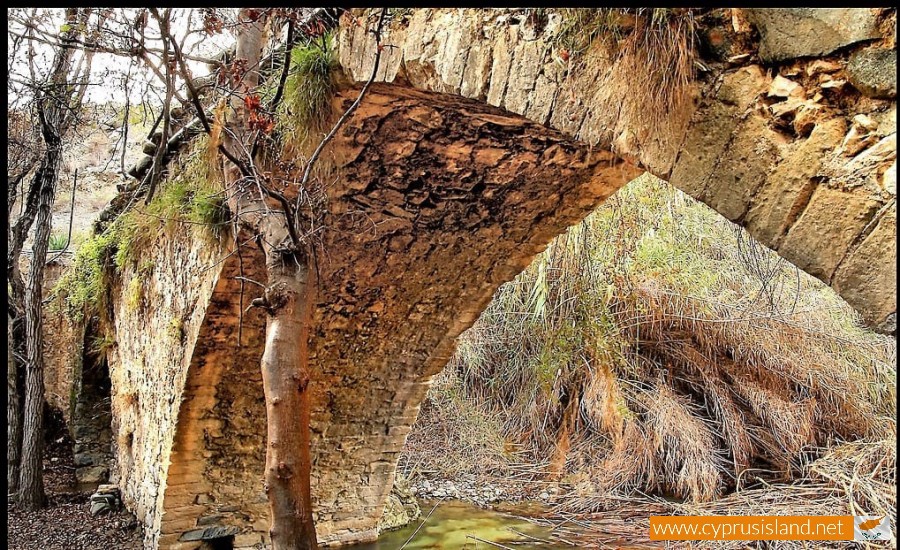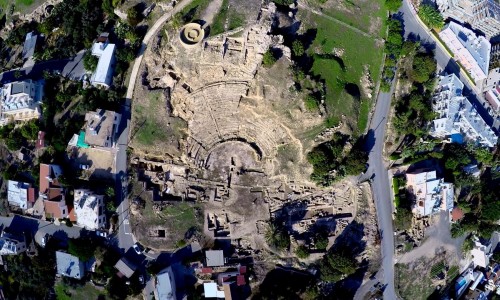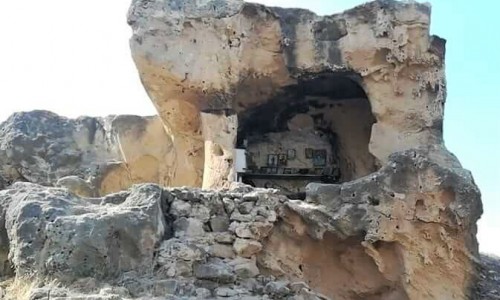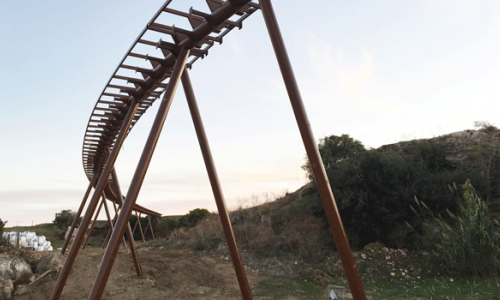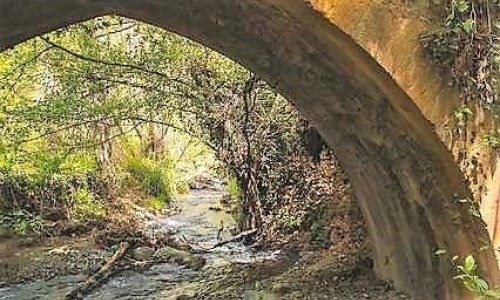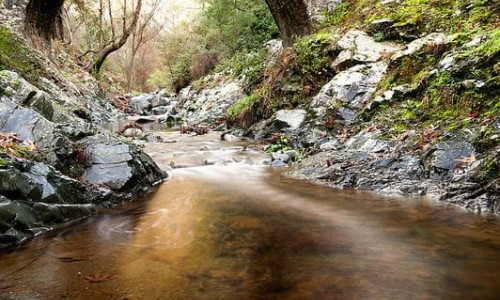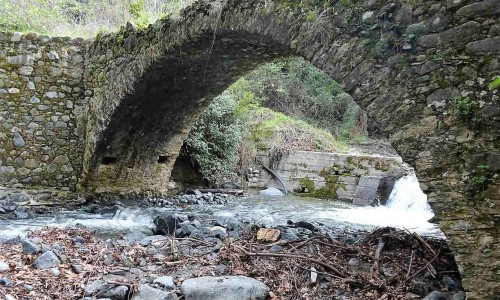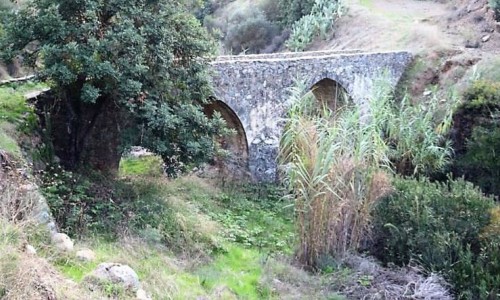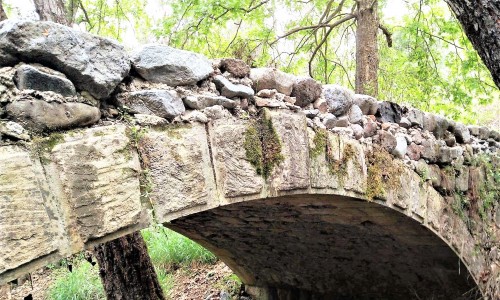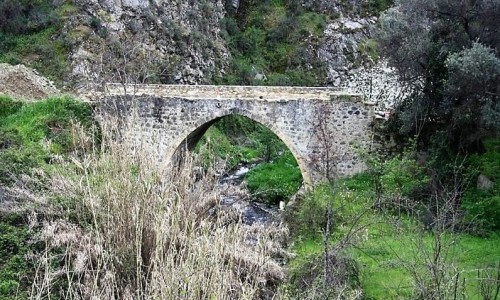Trimiklini Venetian Bridge, Limassol
High in the Troodos foothills, just north of the village of Trimiklini, lies a striking relic of Cyprus’s Ottoman and Venetian past: the Trimiklini Venetian Bridge. Constructed with stones gathered from the riverbed of the Kouris, this centuries-old bridge—built in the Venetian era—stands out with its three asymmetrical stone arches, each of a distinct shape, meticulously woven into the valley’s greenery.
This bridge once formed a vital link between the Paphos region, Kalo Chorio (Limassol), Lefkara, and Nicosia, serving travelers and traders moving through the mountainous terrain. Its nickname, the “Mill Bridge,” reflects its rustic setting near local grain mills and agricultural paths, while the elegant construction reflects an era of practicality crafted with quiet artistry.
A Walk Across Time and Water
Crossing the bridge feels like stepping back centuries. The river below flows gently, broadening into shallow pools where sunlight filters through alder and plane trees overhead. Ripples echo softly beneath the stone arches, and if you pause, you can hear the faint thrum of leaves and bird calls—a reminder of nature’s calm pulse.
Each of the three arches differs in size and design. The largest, central segment spans roughly eight meters, tapering upward into a keystone archway that frames the valley beyond. The smaller side arches are subtly uneven, suggesting they may have been repaired or adapted over time. The surface underfoot is narrow—just over two and a half meters in width—but solid, worn smooth by countless travelers over time.
Depending on the season, reeds and grasses line the damp riverbanks, wildflowers bloom near the stones, and bamboo once cloaked the slopes nearby—though recent clearing has opened views of the bridge’s full elegance.
A Building with Layers of History
This single-arch bridge captures the whisper of Venetian rule, but its quiet resilience carries more recent stories too. Historically a key crossing for villagers and traders, it later served as a link on the carriage roads built during the British Colonial era. At the same site stands another structure—a double bridge built later in the early 20th century, meant to accommodate newer forms of transport. Together, they trace Cyprus’s transition from horse-drawn carts to early motor vehicles.
Local legend also lingers here. It is said that Saint Helena, on her journey from Stavrovouni Monastery, crossed this bridge carrying relics of the Holy Cross before reaching Omodos via Kouka. Whether myth or memory, such stories enrich the bridge's presence, lending it spiritual resonance beyond its architecture.
A Place for Quiet Discovery
The Venetian Bridge remains a rewarding destination for those who explore its setting by foot. A short woodland trail leads visitors from the village down into the valley, through orchards and vineyards, toward the river. Birdwatchers may spot herons or small raptors, and photographers often pause at golden hour to frame the arches in soft light.
Because the bridge lies in a somewhat secluded spot, visits tend to feel personal. You might find yourself alone on the stones for moments of reflection or meditation, listening to the hum of water and wind through branches.
“Who visits?”
The Trimiklini Venetian Bridge calls most to:
- History lovers entranced by old engineering and cultural layers
- Nature walkers seeking green valleys and quiet trails
- Photographers drawn to reflective water, mossy stone, and rustic light
- Pilgrims or spiritual seekers intrigued by sacred crossings and legends
- Day-trippers exploring Troodos foothills, reachable in less than 30 minutes from Limassol
To reach the bridge, visitors follow a narrow mountain road from Trimiklini toward the Kouris River valley, then descend on foot across soft paths that wind through forested slopes.
Tips for Visiting
- Wear comfortable walking shoes—the trail is natural and can be rocky.
- Visit in spring or autumn for lush greenery, mild weather, and ideal light.
- Bring water and snacks, as there are no facilities near the bridge.
- Go early or late in the day for solitude and soft light; midday can bring muted shadows under trees.
- Combine your visit with stops at nearby trimiklini attractions like local chapel views, small vineyards, or the double bridge built in the early 1900s
The Trimiklini Venetian Bridge is a lesson in subtle beauty. It's not grand or ornate—it doesn’t dominate the landscape. Instead, it blends gracefully with river and forest, inviting visitors to sit with its silence, to feel water flow beneath their feet, and to trace the gentle curve of a stone arch that has guided travelers for centuries.
Visit it, and you’ll find a crossing point—but also connection: to history, to landscape, and to moments when the island’s quieter stories truly come alive.




